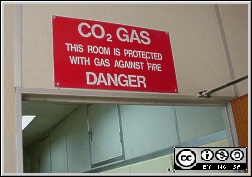 |
| Module 1: Occupational Hygiene - Section 1: Introduction to Occupational Hygiene |
| OH1.7: Control |
 |
| Module 1: Occupational Hygiene - Section 1: Introduction to Occupational Hygiene |
| OH1.7: Control |
The objective of health hazard control is to ensure that employees' exposure to harmful chemical stressors and physical agents 11 does not result in occupational illness .
The variables of interest are concentration or intensity of a hazard and duration of exposure. Reducing the level of contaminant or time spent in the area will reduce overall exposure.
The type of control measure instituted depends on nature of harmful substance or agent and route of entry. There are three fundamental approaches to controlling workplace health hazards.
In the engineering approach, source of hazard is eliminated or reduced to the lowest possible level. This approach is used as the first line of defence as it controls hazard at source. Examples of engineering controls include isolation, enclosure, ventilation and automation.
Administrative measures rely on manipulating workers in order to reduce overall exposure. This includes reducing work times, good work practices, training, and personal hygiene. The administrative approach is difficult to implement and maintain.
Personal protective equipment is used to protect workers from their environment. Because it does not eliminate hazards, it should be used as a last resort in the hierarchy of control measures. It can, however, be used in conjunction with other control measures. Effective use of personal protective equipment can be expensive in the long run and can be a source of conflict if not handled properly.

Elimination/Substitution
The best means of control is to eliminate the hazard at its source through substitution of hazardous substance with safer ones, e.g., use of toluene instead of benzene, use of water based paints instead of solvent based pigments, man-made mineral fibres instead of asbestos.
It may be possible to use the same substance in a safer form: For example, use of pigments in pellet form which does not create dust. It is important to make sure that the new material introduced has been tested and that it is safer than the old hazardous material.
Change the process
If there are no reliable substitutes for dangerous chemicals, then you can consider changing the way the process is carried out. It may be possible to change the process so that it makes the handling of substances safer. Example: using a wet method to control dust; or steam cleaning instead of solvents. Hand operated controls on the production line should be closer so that workers do not have to bend or stretch.
Mechanise the process
Certain dangerous work can be automated. This will prevent workers from going near the dangerous substance
or process.
Example: instead of manual dipping of metal parts in a degreaser, one can use an automatic parts dipper.
Play the video clipThis video clip shows a mechanized process of filling flour bags without the generation of dust.
Isolate the process
Hazardous work can be moved to another part of the plant where there are fewer workers likely to be exposed. The work could be done at a time when fewer workers are around, for example during a late shift or over weekends.
Ventilation
The next best method of controlling workplace air pollutants, if the source of contaminant cannot be eliminated, is the use of a ventilation system. There are two types of ventilation systems than can be used, namely, dilution ventilation and local exhaust ventilation.
Design, installation and maintenance of ventilation systems must be of a high standard if an effective,
invisible barrier is to be ensured.
Ill-maintained systems provide only a sense of false security.
Improved housekeeping
Good housekeeping very often can prevent unnecessary worker exposure. Removal of dust from work surfaces can contribute in bringing overall exposure down. Proper labelling, capping and storage of chemical containers can go a long way in preventing deadly mishaps in the workplace.
Play the video clipThis video clip illustrates poor housekeeping. The area is supposed to be dust-free, yet a spill is being cleaned up in such a way as to spread the dust further!
Play the video clipThis video clip shows a worker sweeping a mess caused by a maintenance task contributing to dust exposure by sweeping.
Education and training
Young and inexperienced workers are at greater risk of exposure to hazardous chemical substances. Education and training programmes should target these workers before they undertake new responsibilities (induction training). To maintain good working habits, refresher training courses should be offered at regular intervals.
Personal hygiene
In every workplace where workers come into chemical substances, especially those that are easily absorbed through the skin, it is important that employers provide washing facilities, emergency showers and eye-wash fountains. These can be used to wash exposed skin to remove toxic or irritant materials.
Eating, drinking or smoking in areas where hazardous materials are used should be prohibited.
Play the video clipThis video clip shows a special area at the factory where workers are allowed to smoke. Strangely enough this area had the greatest concentration of workers visible in the entire mill that day!
At the end of a shift, there should be sufficient time set aside for workers to take a shower before they go home, and it should be possible to leave work clothes behind. This will ensure that workers do not take home hazardous workplace contaminants and expose their spouse or children.
Personal protective equipment
Personal protective equipment such as respirators or masks and ear muffs is used as a supplement for engineering controls. It may be used as a sole means of control if the use of other controls is not feasible. The employer should provide personal protective equipment at no expense to the employee. For such equipment to be effective, employees must understand the uses and limitations of personal protective equipment.
Consultation on the purchase of appropriate personal protective equipment should take place between the employer, the employees or their representative, and industry experts.